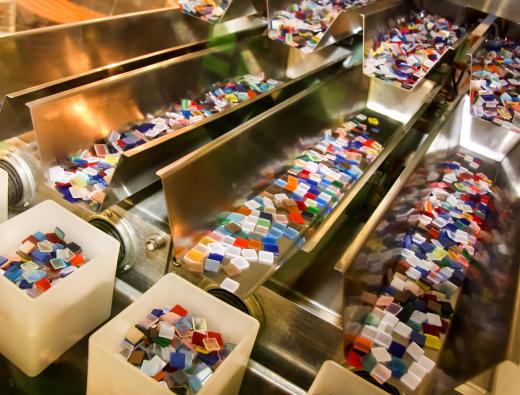A feeder line is an assembly line in a factory where people and equipment produce parts for the main line. Using feeder lines can increase efficiency and output, and a facility may have more than one, especially if it produces complex products. The size and length of the line may vary, and people working in the facility may switch between lines to work on different tasks, or stay on a specific line, depending on how the facility organizes its workers.
On the feeder line, people make goods for use in the production of a final product. Taking this part of production off the main line frees it up to move faster and more effectively, and can make a factory more compact. For assembling products like cars, there may be numerous feeder lines, all eventually ending up on the main line for installation in the vehicle. Some can handle things like seats, while others may assemble wiring harnesses and electrical systems, lens arrays, and so forth.

Assembly line manufacture allows for cheap mass production. To work well, some planning is necessary. People need to break down a product into components to determine the best assembly order, and may decide that a feeder line, or more than one, would be useful for manufacturing. Companies may also think about needs like being able to produce multiple products on the same line at different times, making it necessary to build flexibility into the layout and production equipment. The feeder line can provide opportunities to do this, as factories can open and close different feeder lines, depending on what they need to make.

A feeder line could operate with conveyor belts, trams, and other systems to move products along. In situations where some components need to be made or checked by hand, shunting this production to the side, rather than the main line, can increase efficiency. In this case, people may manually walk items down the feeder line when they are ready, or could use runners, trucks, and belts to move things around the facility.

People working on a feeder line can operate equipment, conduct quality checks, and make sure goods are moving in an orderly fashion. This work can potentially be dangerous, as people are around moving parts, electrical systems, and heavy machinery. In some facilities, people need special training to operate equipment and they stay in one place, refining their skills and focusing on producing one component. In other factories, to keep workers engaged and prevent boredom, people may rotate between positions to acquire different skills and avoid feelings of stagnation on the line.
